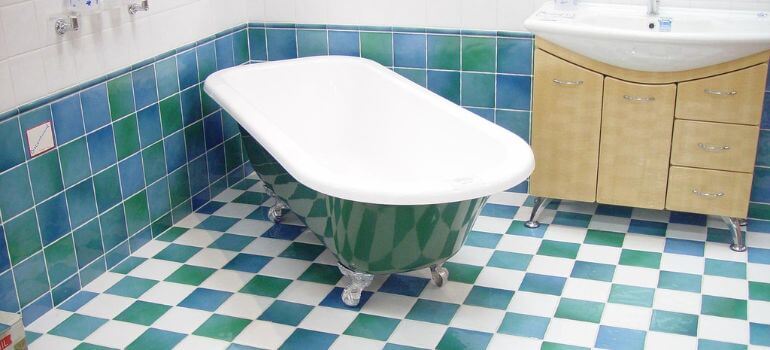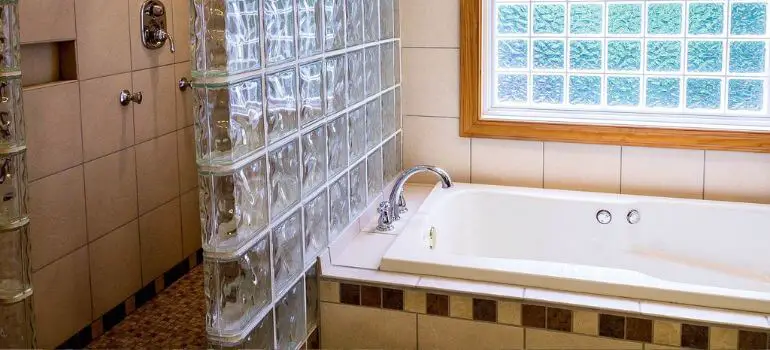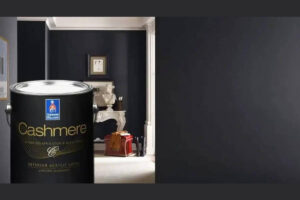Choosing a bathtub involves more than just deciding on its shape and size. The material plays a crucial role in determining the tub’s durability, maintenance requirements, and overall performance. In this comprehensive guide, we will explore the differences between steel tubs and fiberglass tubs, helping you make an informed decision for your bathroom upgrade.
Pros and Cons of Steel Tubs
Durability and Strength
Steel tubs are renowned for their robust construction, providing unparalleled durability. The material can withstand heavy use and is resistant to scratches and dents.
Maintenance Requirements
While steel tubs are durable, they require regular maintenance to prevent rusting. Proper cleaning and occasional re-enameling are essential for maintaining their longevity.
Heat Retention Capabilities
Steel tubs excel in retaining heat, ensuring a warm and comfortable bathing experience. This feature is particularly beneficial for those who enjoy long, relaxing soaks.
Pros and Cons of Fiberglass Tubs
Lightweight and Easy Installation
Fiberglass tubs are significantly lighter than their steel counterparts, making them easier to install. This is a practical advantage, especially in homes where the floor structure might not support the weight of a heavy tub.
Susceptibility to Scratches and Cracks
While fiberglass tubs are durable, they are more prone to scratches and cracks than steel tubs. Careful use and maintenance are essential to prevent damage.
Longevity and Lifespan
Fiberglass tubs have a commendable lifespan, but they may not match the long-term durability of steel tubs. Consider your long-term plans before making a decision.
Aesthetics and Design Options
Variety in Design for Steel Tubs

Steel tubs offer a wide range of design options, from classic to contemporary. This allows homeowners to choose a style that complements their overall bathroom aesthetic.
Customization Options for Fiberglass Tubs
Fiberglass tubs can be easily molded into various shapes and sizes, offering customization options for those with specific design preferences.
Cost Comparison
Initial Costs
Breakdown of Initial Costs for Steel Tubs
Steel tubs, known for their durability, often come with a higher initial price tag. The robust construction and quality materials contribute to this upfront cost. However, the initial investment can be justified by the longevity and strength of the tub.
Comparison with Initial Costs for Fiberglass Tubs
Fiberglass tubs, on the other hand, are generally more budget-friendly in terms of initial costs. The lightweight nature of fiberglass makes it easier to manufacture and install, leading to a lower price point. This can be an appealing factor for those with a tight budget.
Long-Term Expenses and Maintenance
Analysis of Maintenance Requirements for Steel Tubs
While steel tubs boast durability, they do require regular maintenance to prevent rusting. Cleaning with non-abrasive solutions and periodic re-enameling are essential tasks to ensure the tub’s longevity. These maintenance requirements contribute to the overall cost of ownership.
Evaluation of Long-Term Expenses for Fiberglass Tubs
Fiberglass tubs may have a lower initial cost, but their long-term expenses can accumulate. They are susceptible to scratches and cracks, requiring careful use and maintenance to avoid costly repairs. Understanding these long-term expenses is crucial when comparing the overall cost of fiberglass tubs.
Installation Costs
Factors Influencing the Installation Costs of Steel Tubs
The installation of steel tubs can be more complex due to their weight and construction. Professional installation is often recommended, adding to the overall cost. However, the expertise ensures a secure and lasting installation.
Comparison with Installation Costs of Fiberglass Tubs
Fiberglass tubs, being lightweight and easier to handle, offer the advantage of more straightforward installation. Homeowners with some DIY skills may opt for self-installation, potentially saving on labor costs. This can be a significant factor in the overall budget.
Installation Process
Complexity of Installing Steel Tubs
Installing a steel tub may require professional help due to its weight and complexity. This can add to the overall cost of the bathtub installation.
Ease of Installing Fiberglass Tubs
Fiberglass tubs are lightweight and can be easily maneuvered, making them suitable for DIY installations. This can be a cost-saving factor for homeowners.
Environmental Impact
Sustainability of Steel Tubs
Steel is a recyclable material, making steel tubs a more sustainable option. Consider the environmental impact when making your decision.
Eco-Friendliness of Fiberglass Tubs
Fiberglass production can have environmental implications. Research the manufacturing processes of specific brands to choose a more eco-friendly option.
Comfort and Insulation
Comfort Features of Steel Tubs
Steel tubs often come with additional comfort features, such as built-in armrests and lumbar support, enhancing the overall bathing experience.
Insulation Properties of Fiberglass Tubs
Fiberglass tubs provide decent insulation but may not retain heat as effectively as steel tubs. Factor in your climate and personal preferences when deciding.
Popular Brands and Models
Well-Known Steel Tub Brands
Explore reputable brands like Kohler, American Standard, and Jacuzzi for high-quality steel tub options.
Top-Rated Fiberglass Tub Models
Consider popular models from brands like Aquatic, Maax, and Delta for reliable fiberglass tubs.
Customer Reviews and Experiences
Gather Insights from Users of Steel Tubs
Read customer reviews to understand the real-world performance and durability of steel tubs.
Real-Life Experiences with Fiberglass Tubs
Learn from the experiences of fiberglass tub users to make an informed decision about their suitability for your needs.
Maintenance Tips for Each Type
Guidelines for Maintaining Steel Tubs
Regularly clean your steel tub with non-abrasive cleaners and consider re-enameling every few years for optimal maintenance.
Tips for Keeping Fiberglass Tubs in Optimal Condition
Avoid using abrasive cleaners on fiberglass surfaces, and promptly address any scratches or cracks to prevent further damage.
Factors to Consider Before Choosing
Bathroom Space and Layout
Consider the size and layout of your bathroom to determine which type of tub will fit seamlessly into the space.
Personal Preferences and Lifestyle
Evaluate your bathing habits, preferences, and long-term plans to choose a tub that aligns with your lifestyle.
Professional Opinions and Recommendations
Insights from Plumbers and Home Improvement Experts
Consult with professionals to get expert opinions on which type of tub is best suited for your home and lifestyle.
Latest Innovations in Tub Technology
Technological Advancements in Steel Tubs
Stay updated on the latest features in steel tubs, such as hydrotherapy options and smart technology integration.
Innovative Features in Modern Fiberglass Tubs
Explore the technological advancements in fiberglass tubs, including anti-slip surfaces and customizable lighting.
Conclusion
In the battle of steel tubs vs. fiberglass, the right choice depends on your specific needs, preferences, and budget. Consider the pros and cons, weigh the factors that matter most to you, and make an informed decision for a bathtub that will enhance your bathing experience for years to come.
FAQs
Due to the weight and complexity of steel tubs, professional installation is recommended for optimal results.
While fiberglass is generally resistant to discoloration, proper care and maintenance are crucial to preserving its appearance.
Steel is a recyclable material, making steel tubs a more environmentally friendly option compared to fiberglass.
It’s advisable to use non-abrasive cleaners on steel tubs to avoid damaging the enamel finish.
While fiberglass tubs provide decent insulation, steel tubs are known for their superior heat retention capabilities.



